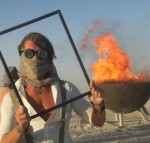“The world is full of magical things, patiently waiting for our senses to grow sharper.”
– William B. Yeats
I’ve always been fascinated with maps. As a child, I could spend hours looking at old atlases, imagining the mysterious landscapes represented by the lines and words weaving across the page. The older the maps, the more enthralled I was. If you were to go back several centuries, maps portrayed a world on the brink of modernity. The features of this world are almost familiar, almost reminiscent of the commonplace lines of our globe. Yet, they are oddly curved by inaccuracies of old sextants, and the odd names they bear seem more fitting to mythical lands than to terrestrial regions.
The older the map, the more it leaves to the imagination of the reader and the creativity of the author. On many, the remnants of the known coastlines disappear into the expanse of the unmarked ocean, while the mountain ranges give way to the great emptiness of terra incognita. Australia, North-West Passage, Inland Africa, and Alberta: all unknowns, the great mysteries of the world hidden over the curve of the horizon. Eldorado, Shangri-La, and the Kingdom of Prester John: all containing the promise of mystical lands. Lands said to be guarded by monsters, leviathans and mermen, basilisks and skiapods. The maps of the Renaissance abound in mythical creatures drawn to populate the vast expanses of the unknown. Over time, cartographers have come to denote this visual device as “Hic Sunt Dracones” – “Here Be Dragons”.
The phrase “Here Be Dragons” has historically only once been recorded on a map. But the image of a dragon guarding the treasure in a far-away land is much more than just a way to fill up blank spaces on a map. It is a powerful metaphor of the promise of the Unknown. The Unknown, which inspires us with awe and wonder, fills our childhood dreams and aspirations. It titillates and terrifies us, and it dwells right there, just over the horizon. For those who live and breathe its mystery and promise, and for those who are brave enough to face it, the promise of the Unknown bears the offer of a great reward – the treasure in the dragon’s cave.
The ability to be enthralled by such a mystery, to be driven by it, and to strive to uncover it, is one of the fundamental wellsprings of all human endeavours, of all religion, art, and science. It is, in many ways, that which makes us human.
There is something about the feeling of awe and desire that the Unknown stirs within us. It drove our ancestors to approach the primordial fire, and to carry it back to their caves. It drove their caravels over the stormy horizons. It drove us to split the atom and unleash the fury within. Once in a while, it also makes us pause, “rapt in awe” with the world around us. “He to whom this emotion is a stranger”, wrote Einstein, “is as good as dead: His eyes are closed.”
The dragons on the mediaeval maps represent that peculiar relationship we have with the Unknown. But there are no more dragons left on our globes (at least not on Google Maps). Science has chased them off the edges of the map into the dustbin of historical marginalia. All too often, one hears the accusation that along with monsters, science has chased mystery from our lives; it has taken away our ability to feel awe and wonder.
Bullocks. Science may have taken away from us a primitive, infantile sort of awe, where we no longer tremble in fear before thunder thinking that we have somehow incurred the wrath of gods. Yet, science has given us a different sort of wonder: the wonder of knowledge and understanding. Has science not also filled our lives with many wonder(ful) things? For every mystery that science has solved, it has brought to light dozens of others. The world we live in now has never been so full of mystery and dizzying possibility. Humanity has never before had the capacity to comprehend the sheer awe-inspiring grandeur of the universe as it has today. And if we fail to see and feel such wonder, we only have our complacency and ignorance to blame.
This piece is part 1 of a 2 part series on Science and the Mystery of the Unknown. The piece is continued in Yūgen, Part II.




